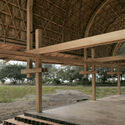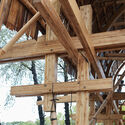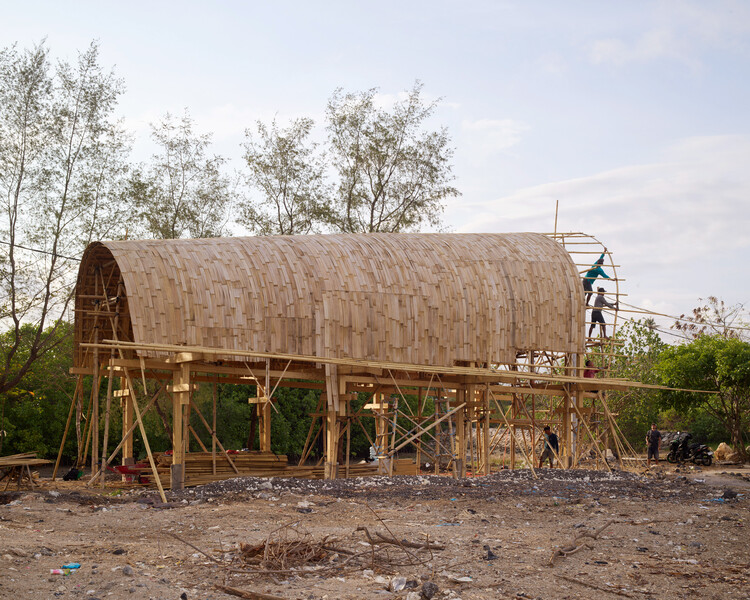 BaleBio Bamboo Pavilion by Cave Urban. Image © Bas Princen for Bauhaus Earth, 2024
BaleBio Bamboo Pavilion by Cave Urban. Image © Bas Princen for Bauhaus Earth, 2024
Share
Or
https://www.archdaily.com/1035664/bauhaus-earth-transforms-disused-car-park-into-bamboo-community-pavilion-in-bali-indonesia
Bauhaus Earth is a Berlin-based non-profit organization working toward a systemic transformation of the built environment. Its mission includes transitioning to bio- and geo-based materials, reusing existing buildings, and restoring ecosystems. Together with the Bamboo Village Trust, a philanthropic financial vehicle, and Kota Kita, a participatory urban design organization, Bauhaus Earth has developed BaleBio, a bamboo pavilion designed by Cave Urban and rising above Mertasari Beach in Denpasar, Bali. The pavilion transforms a disused car park into an open community meeting space, offering a counterpoint to the city’s tourism-driven coastal development. Designed as a regenerative building, BaleBio stores carbon instead of emitting it, challenging the extractive construction model that is replacing traditional wood and bamboo craftsmanship with concrete structures across the island.
 BaleBio Bamboo Pavilion by Cave Urban. Image © Iwan Sastrawan
BaleBio Bamboo Pavilion by Cave Urban. Image © Iwan Sastrawan
Bauhaus Earth‘s broader aim is to help the global building industry evolve from a major contributor to the climate crisis into a force for ecological and social regeneration. It advances this mission through scientific research, demonstration projects, and political advocacy, bringing together professionals from architecture, science, and industry. The 84-square-meter BaleBio Pavilion was developed as part of Bauhaus Earth’s ReBuilt initiative, a German-funded program promoting the concept of a regenerative built environment through four case studies in Berlin-Brandenburg (Germany), Cape Town (South Africa), Denpasar-Bali (Indonesia), and Paro-Thimphu (Bhutan). The initiative encourages the adoption of regenerative building materials and identifies opportunities to use bio- and geo-based resources, such as wood, bamboo, hemp, and compressed earth blocks, as well as secondary materials like reused or recycled building components. The BaleBio Pavilion is one of the program’s demonstration projects.
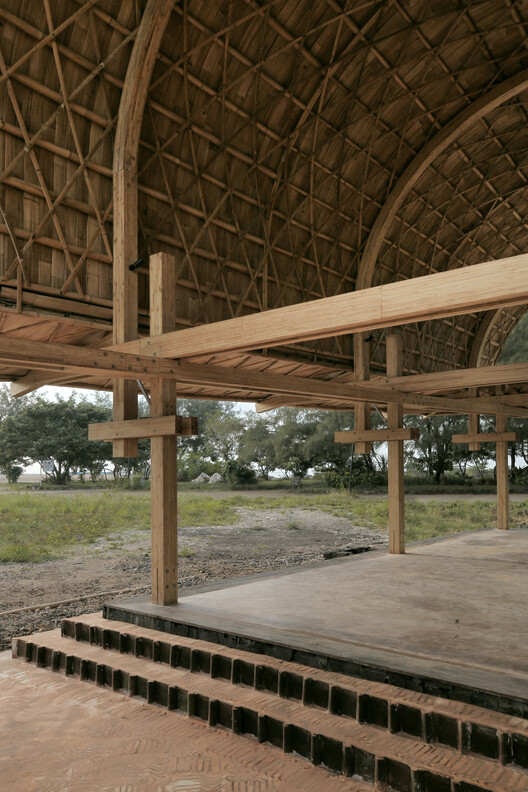 BaleBio Bamboo Pavilion by Cave Urban. Image © Iwan Sastrawan
BaleBio Bamboo Pavilion by Cave Urban. Image © Iwan Sastrawan
Cave Urban‘s design features a sweeping barrel-vaulted roof made of slender bamboo rafters clad in pelupuh (flattened bamboo), rising 8.5 meters to create a shaded canopy with natural ventilation and passive cooling. The structural frame uses locally sourced petung bamboo, compressed and resin-laminated to achieve the strength and versatility of steel or timber while retaining its renewability. Reclaimed volcanic rock, lime plaster, and repurposed clay roof tiles add thermal mass and further reduce embodied carbon. All materials were grown, processed, and assembled locally in Indonesia, helping to establish a regenerative regional supply chain. Prefabricated laminated bamboo components were manufactured off-site and assembled on-site, with local artisans contributing to the detailing and finishing. The structure combines traditional joinery with precision-engineered connections, drawing inspiration from the Bale Banjar, an open village hall central to Balinese communal life, merging a familiar social typology with material innovation.
Related Article From Concrete to Cultivation: How AI and Robotics Are Rewriting Architecture’s Material Logic
As part of Bauhaus Earth’s value chain analysis and material research, the pavilion’s circular potential and scalability were rigorously assessed. Results confirmed a 110% reduction in embodied carbon compared to a conventional building, making it carbon-negative from Cradle to Construction (Stage A). As the first building in Bali to use structural laminated bamboo, BaleBio is meant to serve as a prototype for an architecture that restores ecosystems, supports local economies, and reconnects cultural heritage with contemporary construction methods. According to Bauhaus Earth, the pavilion stands as a counterpoint to Bali’s carbon-intensive tourism and influencer culture, offering a different vision: a regenerative, community-centered building that saves carbon and remains permanently open to the public. Since its completion in early 2025, the bamboo structure has transformed a neglected site into a vibrant community hub, serving as a meeting place, classroom, and stage for local events.
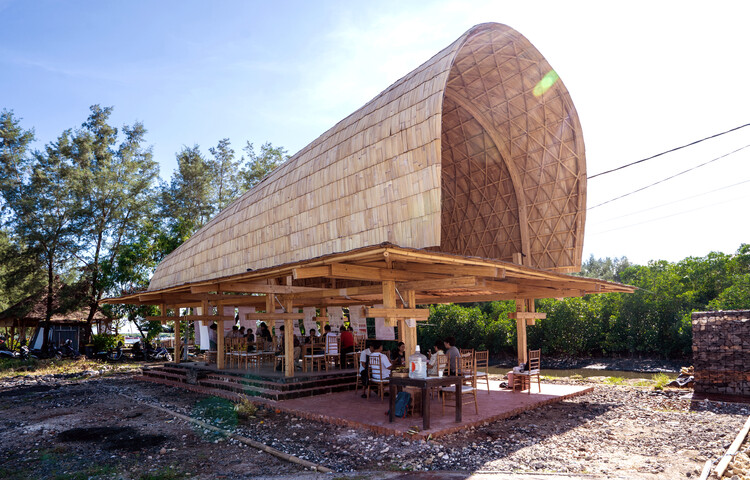 BaleBio Bamboo Pavilion by Cave Urban. Image © Muhammad Zianurrahman
BaleBio Bamboo Pavilion by Cave Urban. Image © Muhammad Zianurrahman BaleBio Bamboo Pavilion by Cave Urban. Materials scheme. Image © Cave Urban
BaleBio Bamboo Pavilion by Cave Urban. Materials scheme. Image © Cave Urban
The BaleBio Pavilion has already received international recognition in 2025, including the Australian Good Design Award for Social Impact, a commendation from the Built by Nature Prize, and Gold in Excellent Architecture at the German Design Award in the Circular Design and Fair & Exhibition categories. Other recent initiatives have similarly highlighted the role of craftsmanship and local materials in shaping a sustainable future for architecture. The Holcim Foundation Awards recognized 20 projects worldwide, ranging from a semi-permanent school in a Kenyan forest to urban regeneration initiatives in Madrid, Dhaka, and Shenzhen. Likewise, the Aga Khan Award for Architecture (2023–2025) honored seven projects that demonstrate architecture’s capacity to foster pluralism, community resilience, cultural dialogue, and climate-responsive design. Finally, as the Venice Architecture Biennale reaches its closing weeks, several projects among its 700 participants continue to explore material responses to the climate crisis.



